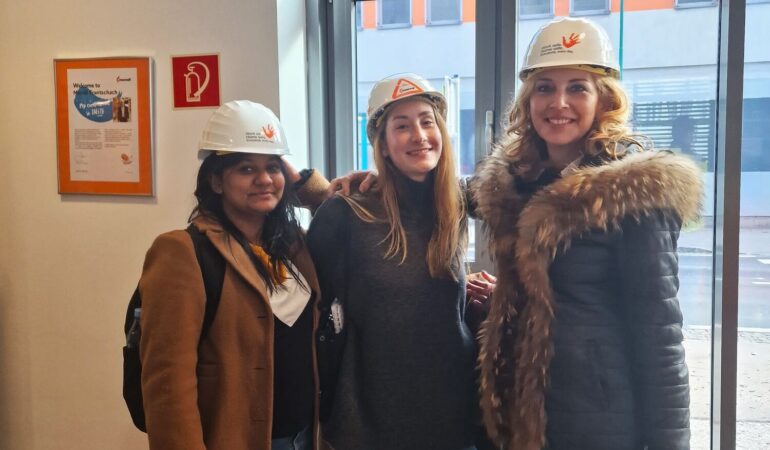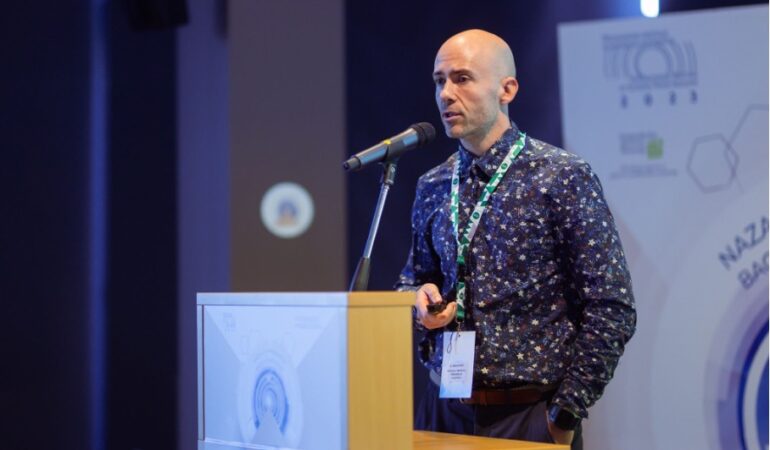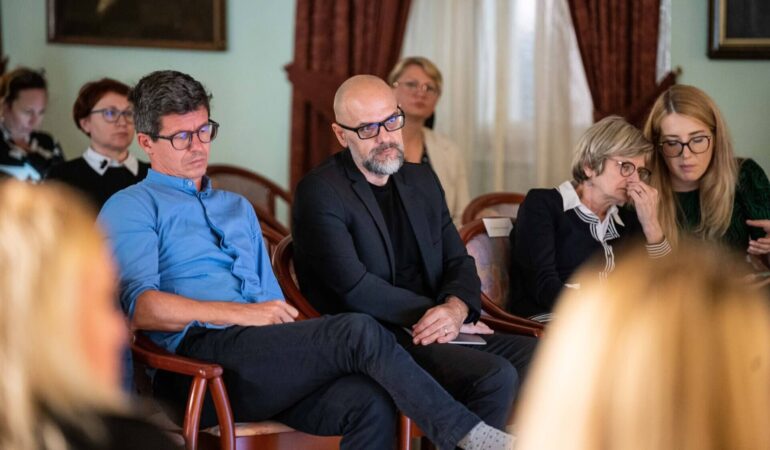
Exploring Innovations in Packaging: A Visit to Graz University of Technology and Mondi Facilities
In a groundbreaking event, students and professionals alike were treated to an insightful journey into the world of packaging at Graz University of Technology Campus Inffeld and Mondi AG facilities. The collaborative effort showcased cutting-edge research and developments in the packaging industry, providing attendees with a firsthand look at the innovations shaping the future of

Matej Bračič Delivers Talk on Paper and Book Deacidification at the 49th International DITP Symposium
Our college Matej Bračič, a member of Laboratory for characterization and processing of polymer materials, attended 49. International DITP Symposium and gave a talk, entitled Deacidification of paper and books. This was a great venue for all interested in novel research in paper science and paper technology (https://lnkd.in/dhdYEQ5c). More information can be found at the website

Uspešno izvedena okrogla miza Dediščinska znanost in podnebne spremembe
Univerza v Mariboru je skupaj s Pokrajinskim muzejem organizirala okroglo mizo Dediščinska znanost in podnebne spremembe, katere namen je bil spodbuditi različne deležnike k povezovanju in izvajanju interdisciplinarnih raziskav, ki bodo prispevale odlične raziskovalne rezultate in inovacije na tem področju, hkrati pa izboljšati prenos znanja med raziskovalnimi organizacijami in javnimi organizacijami na področju dediščine. Zbrane
Microencapsulation of cannabidiol in liposomes as coating for cellulose for potential advanced sanitary material
The microencapsulation of the cannabidiol and its integration into the tampon can eliminate vaginal inflammation, which at the same time lead to relaxation of the abdominal muscles. The tampon, which contains the active substance cannabidiol (CBD), was developed as an advanced fibrous composite for sanitary application. The active substances were microencapsulated, and, as a carrier,
Rapid Functionalization of Polytetrafluorethylene (PTFE) Surfaces with Nitrogen Functional Groups
The biocompatibility of body implants made from polytetrafluoroethylene (PTFE) is inadequate; therefore, the surface should be grafted with biocompatible molecules. Because PTFE is an inert polymer, the adhesion of the biocompatible film may not be appropriate. Therefore, the PFTE surface should be modified to enable better adhesion, preferably by functionalization with amino groups. A two-step
Non-Equilibrium Plasma Methods for Tailoring Surface Properties of Polyvinylidene Fluoride: Review and Challenges
Modification and functionalization of polymer surface properties is desired in numerous applications, and a standard technique is a treatment with non-equilibrium gaseous plasma. Fluorinated polymers exhibit specific properties and are regarded as difficult to functionalize with polar functional groups. Plasma methods for functionalization of polyvinylidene fluoride (PVDF) are reviewed and different mechanisms involved in the
Effective Removal of Acid Dye in Synthetic and Silk Dyeing Effluent: Isotherm and Kinetic Studies
Here, we propose a low-cost, sustainable, and viable adsorbent (pine tree-derived biochar) to remove acid dyes such as acid violet 17 (AV), which is used in the silk dyeing industry. As a case study, the AV removal process was demonstrated using synthetic effluent and further as a proof of concept using real dye effluent produced
One-Step Fabrication of Hollow Spherical Cellulose Beads: Application in pH-Responsive Therapeutic Delivery
The path to greater sustainability and the development of polymeric drug delivery systems requires innovative approaches. The adaptation and use of biobased materials for applications such as targeted therapeutic delivery is, therefore, in high demand. A crucial part of this relates to the development of porous and hollow structures that are biocompatible, pH-responsive, deliver active
Humidity Response of Cellulose Thin Films
Cellulose-water interactions are crucial to understand biological processes as well as to develop tailor made cellulose-based products. However, the main challenge to study these interactions is the diversity of natural cellulose fibers and alterations in their supramolecular structure. Here, we study the humidity response of different, well-defined, ultrathin cellulose films as a function of industrially
Adsorptive Removal of Heavy Metal Ions by Waste Wool
Raw and waste wool were studied for the removal of heavy metal ions such as Zn(II) and Cu (II) from wastewater. Characterization of both wool samples was done by attenuated total reflection-Fourier transform infrared (ATR-FTIR) spectroscopy, X-ray photoelectron spectroscopy (XPS), and zeta potential analysis. The sorption kinetics of metal ions on wool samples was also
